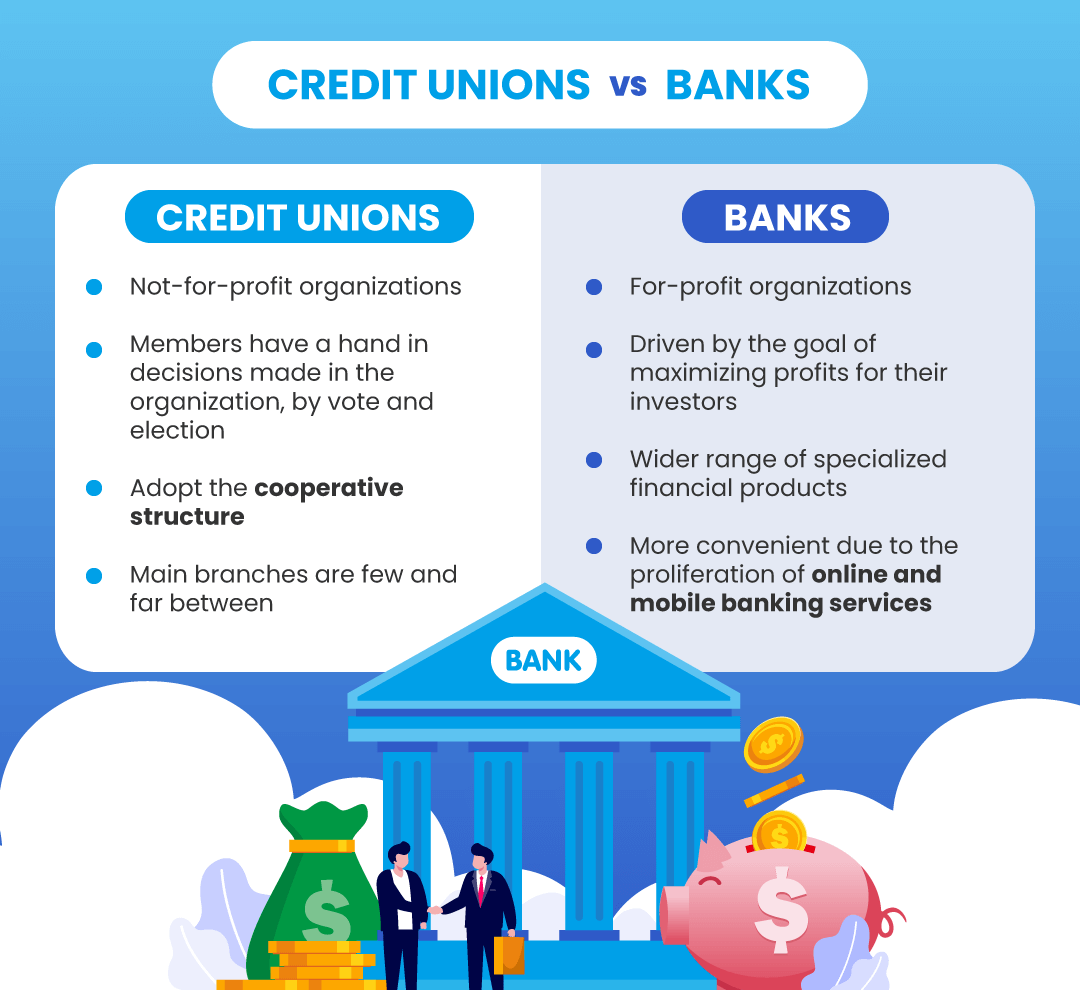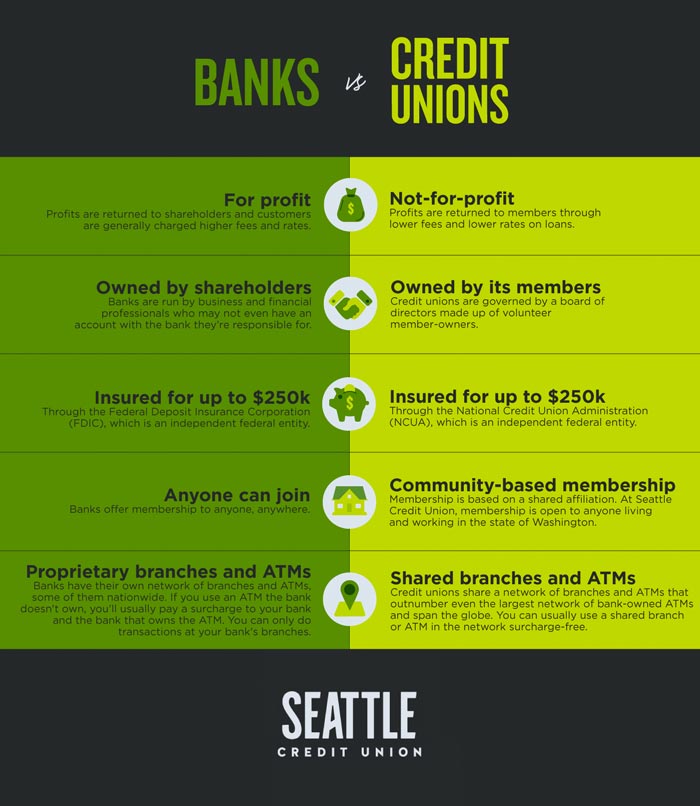Federal Credit Union: Top Quality Financial Services and Support in Wyoming
Federal Credit Union: Top Quality Financial Services and Support in Wyoming
Blog Article
The Ultimate Guide to Understanding Cooperative Credit Union

Cooperative credit union stand as unique monetary entities, rooted in concepts of common support and member-driven operations. Beyond their foundational values, understanding the intricate operations of debt unions includes a deeper exploration. Unwinding the intricacies of subscription eligibility, the evolution of services used, and the unique benefits they bring requires a comprehensive examination. As we browse with the ins and outs of lending institution, an insightful journey awaits to shed light on these member-focused organizations and how they vary from traditional financial institutions.
What Are Cooperative Credit Union?
Lending institution are member-owned monetary establishments that supply a series of financial solutions to their members. Unlike standard banks, credit unions operate as not-for-profit organizations, implying their key focus is on serving their participants instead of making the most of revenues. Participants of a cooperative credit union usually share a typical bond, such as working for the same employer, coming from the exact same area, or belonging to the same organization.
One of the essential benefits of cooperative credit union is that they commonly supply greater rates of interest on financial savings accounts and lower rate of interest on finances contrasted to banks. Wyoming Credit Union. This is because lending institution are structured to profit their members directly, enabling them to hand down their revenues in the form of far better prices and less fees. Furthermore, cooperative credit union are known for their personalized customer support, as they focus on developing connections with their participants to comprehend their distinct economic requirements and objectives
Background and Advancement of Cooperative Credit Union
The roots of member-owned monetary cooperatives, known today as cooperative credit union, trace back to a time when neighborhoods sought choices to conventional financial organizations. The principle of cooperative credit union come from the 19th century in Europe, with Friedrich Wilhelm Raiffeisen usually attributed as the pioneer of the cooperative banking movement. Raiffeisen established the first identified cooperative credit union in Germany in the mid-1800s, emphasizing community assistance and self-help concepts.
The evolution of cooperative credit union continued in The United States and copyright, where Alphonse Desjardins developed the initial cooperative credit union in copyright in 1900. Soon after, in 1909, the first united state lending institution was developed in New Hampshire by a team of Franco-American immigrants. These very early lending institution operated the essential principles of common support, democratic control, and member ownership.
In time, lending institution have actually grown in popularity worldwide due to their not-for-profit structure, concentrate on offering participants, and offering competitive economic services and products. Today, credit scores unions play a vital role in the financial sector, offering community-oriented and accessible banking choices for organizations and individuals alike.

Membership and Eligibility Standards
Membership at a debt union is typically restricted to individuals satisfying particular eligibility requirements based on the organization's starting principles and regulatory needs. Some debt unions might just serve people who function or live in a particular location, while others might be customized to employees of a certain company or members of a certain association.
Furthermore, debt unions are structured as not-for-profit organizations, suggesting that their main goal is to offer their members rather click to read than generate profits for shareholders. This emphasis on member solution usually translates into even more individualized attention, lower costs, and affordable rates of interest on loans and financial savings accounts. By fulfilling the qualification criteria and becoming a member of a lending institution, individuals can access a variety of monetary items and solutions customized to their specific requirements.
Solutions and Products Supplied
Among the vital elements that establishes credit scores unions apart is the varied variety of monetary product and services they use to their participants. Lending institution normally give standard banking solutions such as cost savings and examining accounts, finances, and charge card. Participants can also gain from investment solutions, consisting of retired life accounts and economic preparation assistance. Numerous credit report unions provide affordable rates of interest on interest-bearing accounts and fundings, in addition to lower fees contrasted to conventional banks.
Additionally, cooperative credit union usually Find Out More give hassle-free online and mobile banking choices for participants to conveniently manage their finances. They might supply benefits such as common branching, enabling members to access their accounts at other credit score unions across the nation. Some lending institution also provide insurance coverage items like automobile, life, and home insurance to assist members protect their properties and enjoyed ones.

Benefits of Banking With Cooperative Credit Union
When considering economic establishments, discovering the advantages of banking with debt unions exposes distinct advantages for participants seeking tailored solution and affordable prices. Unlike big financial institutions, credit scores unions are member-owned and prioritize building solid partnerships with their members. Overall, financial with a credit score union can provide a more personalized, cost-efficient, and member-centric monetary experience.
Conclusion
In conclusion, debt unions stand out as member-owned financial organizations that focus on offering their members over making the most of revenues. With origins dating back to 19th century Europe, credit report unions follow concepts of mutual assistance and participant possession.
Credit rating unions are member-owned economic establishments that provide an array of financial solutions to their participants. The concept of debt unions stem in the 19th century in Europe, with Friedrich Wilhelm Raiffeisen often credited as the pioneer of the participating financial motion.The evolution of credit scores unions continued in North America, where Alphonse Desjardins developed the first debt union in copyright in 1900. Credit unions commonly give standard financial services such as savings and examining accounts, lendings, and pop over to these guys credit score cards.When thinking about financial institutions, discovering the benefits of financial with credit scores unions discloses distinct benefits for participants looking for customized service and competitive prices.
Report this page